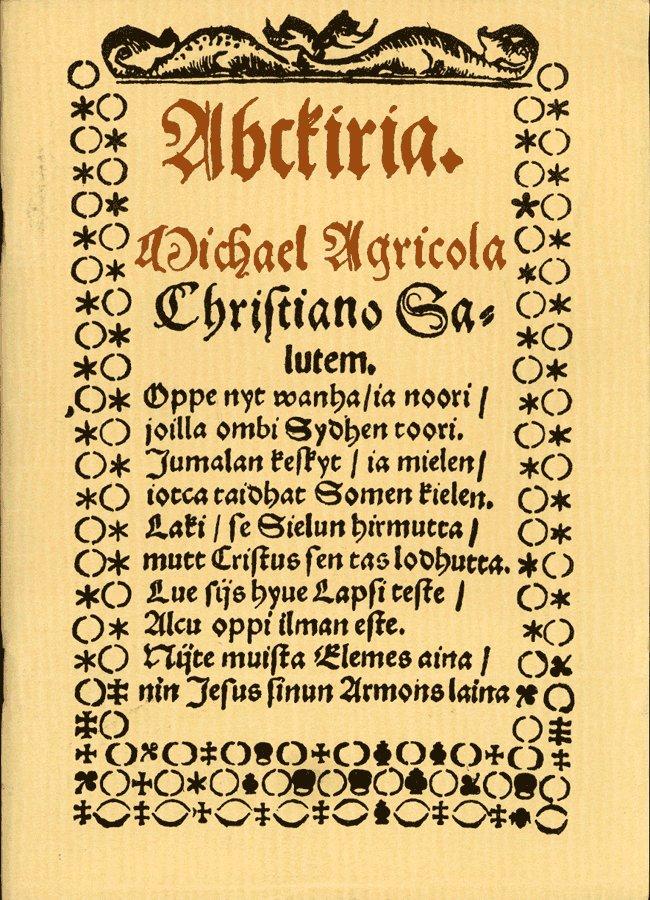Finnish
The history of literature in Finnish dates back to the Protestant Reformation in the 1540s. Finnish poetry, however, is even older, as the Kalevala metre as well as the simple lyric motifs and epic features used by singers of poetry originate from the days of Proto-Finnic, that is, the pagan era. Heroic poetry had a heyday in Western Finland during and even after the Viking Age at around 1100, and it is believed to have spread from there towards the east, to the songlands of Karelia. Finnish physician and philologist Elias Lönnrot (1802–1884) collected traditional oral poetry during his many expeditions and used it to create the Finnish national epic, the Kalevala (1835, second version 1849).
In terms of language, Finnish literature is divided into literature in Finnish and in Swedish, but it also includes literature in Latin and other languages. Bishop of Turku Mikael Agricola (c. 1510–1557), who published the first book in Finnish, Abckiria [ABC Book], is regarded as the father of literary Finnish. Agricola created a language the tone of which was based on western Finnish, and this remained the case for Old Literary Finnish throughout the period when Finland was under Swedish rule (until 1809). During the Age of Autonomy (1809–1917), the Finnish language gained a significant societal status. Spelling was reformed, Swedish expressions were discarded, vocabulary was adopted from also the eastern dialects, and new words were created.
You can learn the basics of Finnish here.
To read what experts write (in Finnish) about current language issues, see here.
